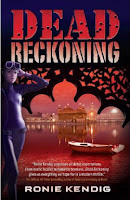Words of Comfort for Times of Loss, written by Cecil Murphey and Liz Allison, serves a two-fold purpose: it helps you know what to say (and what not to say) when someone is grieving, and it provides a precious comfort to anyone in the midst of grief. The stories within are personal, relevant, and heart-warming. The illustrations by Michal Sparks are so beautiful you can't tear your eyes away.
About the book:
Through great personal loss, authors Cecil Murphey and Liz Allison have gained insight to share with others who are going through uncertainty, depression, and loneliness after losing a loved one. They also offer advice for those comforting someone who is grieving.
Among comforting paintings by artist Michal Sparks, brief stories, personal experiences, and prayers offer a meaningful path toward healing for readers when they:
- feel alone and lost in their grief and want to reconnect with others and to life
- seek to make sense of their loss alongside their sense of faith, purpose, and God
- want to honor their loved one without clinging to the past in unhealthy ways
Readers are given gentle permission to grapple with doubt, seek peace, and reflect on loss in their own way without judgment and with understanding and hope. A perfect gift for a loved one dealing with loss and grief.
About the Authors:
Liz Allison was married to NASCAR driver Davey Allison until his tragic death in 1993. Widowed at 28 with two young children to raise, Liz faced the long journey of pain, loss, and grief with great faith. Committed to encouraging others, she returned to her work in TV reporting, has published eight books, and hosts a weekly radio show. Please visit
http://www.lizallison.com/ 
Cecil Murphey is an international speaker and bestselling author who has written more than 100 books, including New York Times bestseller 90 Minutes in Heaven (with Don Piper). No stranger himself to loss and grief, Cecil has served as a pastor and hospital chaplain for many years, and through his ministry and books he has brought hope and encouragement to countless people around the world.
Why We Write About Loss
On the morning of July 12, 1992, my husband, Davey, left home like any other morning—he kissed my forehead and hugged our kids.That afternoon I answered a knock at the door, sensing something wasn’t quite right. When I glimpsed the faces of Davey’s two best friends—they didn't have to speak—the looks on their faces said it all.
That day, after lunch with his race team, Davey had hopped into his helicopter and taken an unplanned trip to the nearby Talladega Superspeedway to watch a buddy practice. Attempting to land in the infield, he had lost control of his helicopter and crashed. Although paramedics airlifted Davey to a Birmingham hospital, sixteen hours later he was pronounced dead.
Immediately following Davey’s death, I had to work through my grief enough to plan his funeral and make hundreds of small-but-significant decisions, all while maintaining the time and energy to care for our two young children, ages one and three. Well-wishing friends hovered around me and frequently asked, “What can I do for you?
Most of the time, I could only respond with a blank stare. Looking back, my friends could have done many things for me, but they didn’t know what to do, and I didn’t know what to tell them.
I hope the insights I have gained during the aftermath of Davey’s death will help you as you struggle with your own grief. —Liz
*******
Two weeks after my father suffered a ministroke, a massive stroke took his life. On the day of his funeral, my older brother, Ray, died of cancer. Over the next eighteen months, I lost two brothers-in-law and my mother.
On the Sunday after Dad’s and Ray’s funerals, a parishioner rushed up to me, hugged me, and said, “Pastor, I heard about the deaths. Were they saved?”
I honestly don’t remember what I answered, but I wanted to shout, “Does it matter right now? I hurt. I’m so filled with pain that I’m not sure I can handle the worship service today!”
In 2007, our house burned down. Our son-in-law, Alan, died in the fire. The next day, a neighbor pulled up in front of our burned house, got out of his car, and started to look around. “Where did he die?” he asked.
Through the years, I’ve met many like those two people. Maybe they didn’t know what to say. Perhaps they were so focused on what they cared about that they were unaware of my pain. Instead of helping me, those comments made me feel even worse. What I needed was compassion. I didn’t get that from either of them, but I can offer it to you.
That’s why we’ve written this book. —Cec
Contests:
We have two contests this week.
First, the authors and Kathy Carlton Willis Communications, are giving away a beautiful Grand Prize Basket.
The Grand Prize Giveaway includes:

Words of Comfort for Times of Loss
Heaven Is Real Gift Edition
90 Minutes in Heaven
Journal
Pens
Potato soup
Oyster crackers
Dove silky smooth milk chocolate
Dove silky smooth dark chocolate
Ultra-plush spa socks
Large gel eye mask
This special grand prize giveaway is designed especially for someone going through a difficult time. The winner can keep or pass along to someone who could use the pick-me-up.
Then, here at Pix-N-Pens, we're giving away a copy of Words of Comfort for Times of Loss.
To enter both contests, you just need to leave one comment below. In your comment, share one tip for dealing with grief. You can share a verse of Scripture that comforts you, or something you do to help someone else. And be sure to leave your e-mail address so we can contact you if you win.
You must leave a comment by next Thursday, April 8th, to qualify.

























































